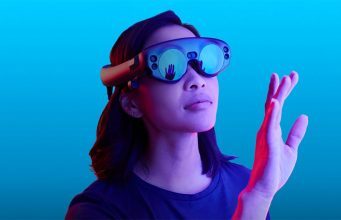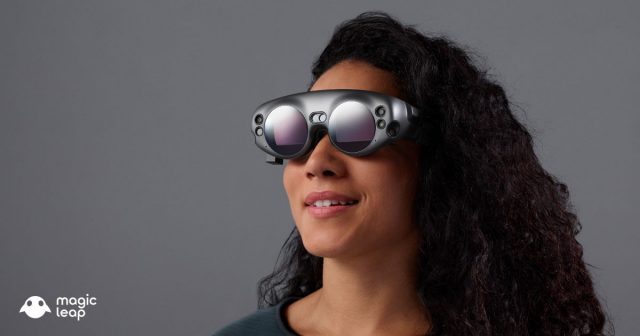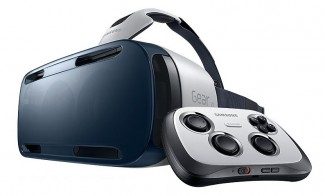
AT&T and Magic Leap formed a partnership last year which looked a lot like the one between Cingular (now merged with AT&T) and Apple which led to the launch of iPhone. The idea was that the iPhone was an all new mobile computing device that needed a next-gen network which only Cingular could provide; the iPhone first launched exclusive to the Cingular network. AT&T and Magic Leap are pitching a similar marketing message involving Magic Leap One and 5G, and have begun exclusively selling the headset in select AT&T stores… but the whole thing falls flat upon the realization that the headset doesn’t actually have any 5G hardware.
Magic Leap’s marketing for its first AR headset, the Magic Leap One ‘Creator Edition’, has been… curious, to say the least. From the presentation on the company’s website, to a consumer-facing augmented reality Game of Thrones demo, to the availability of the headset in select AT&T and stores… it very much seems like the company is saying that this device is ready for a broader audience than just developers. But there’s little to justify the headset’s $2,300 price tag if you aren’t expecting to build applications for the headset that may one day make you money years in the future when such devices are more widespread.

This unclear messaging about who the headset is really for has reached a new peak of strangeness when AT&T and Magic Leap announced recently that the Magic Leap One is being exclusively sold in a handful of flagship AT&T stores.
“Beginning next week, AT&T and Magic Leap will take the leap to a new reality, further enhancing the way consumers experience their world [my emphasis],” reads a press release marking the occasion. The release is also filled with quotes from both companies about how critical a 5G network will be to building the future of computing that Magic Leap is promising:
“Our journey with Magic Leap to transform industry and consumer experiences starts today with the launch of the Magic Leap One only available from AT&T,” said John Donovan, CEO, AT&T Communications. “Together with Magic Leap, we’re making the future of education, telemedicine, sports, entertainment and everyday experiences extraordinary. But there’s so much more creativity ahead. 5G will help drive the next generation of spatial computing that will deliver immersive, interactive content everywhere.”
“AT&T’s investment in 5G will enable the widespread adoption of emerging and innovative technologies like Magic Leap’s spatial computing and will help to redefine how we access and experience everything from work, play, communication, media, healthcare and education,” said Rony Abovitz, CEO of Magic Leap. “The Magic Leap team and I are excited to take this next step in our exclusive partnership, tapping into AT&T’s vast retail distribution and the Magicverse innovations that will be powered by their game changing 5G network.”
The central message is clear: 5G is the key to realizing Magic Leap’s vision—one where spatial computing is part of our everyday lives. But the headset that’s now being sold in some AT&T stores doesn’t actually have any 5G hardware at all, which really convolutes the story the companies are spinning.
The press release does specify that the headset is Wi-Fi only, but in a way that doesn’t at all address the fact that it simultaneously talks about how important 5G is to the future the device is supposed to enable: “The initial launch will operate over a Wi-Fi connection and provide new communication and entertainment experiences at a whole new level.”
Magic Leap didn’t respond to our request for comment on the nature of their 5G messaging and partnership with AT&T.
Ostensibly, AT&T wants people who come into their stores to buy the $2,300 Magic Leap One. But at the same time they’re saying ‘for the real future that we’re promising, you’re going to need to buy another headset that’s equipped with 5G’.
It would have been as if Cingular and Apple talked about how the iPhone was the future of mobile computing, and then launched it exclusively in Cingular stores as a Wi-Fi only product… expecting customers that believed in the vision to later buy another iPhone which actually had cellular connectivity.
– – — – –
This is just another oddity in a string of unclear messaging from Magic Leap’s marketing approach, which from an aesthetic standpoint, looks and feels targeted at consumers, but from a pricing and feature standpoint can’t be considered anything but a development kit.
Magic Leap is no clearer on messaging with developers who are actually understand that the product is a dev kit through and through. One developer I spoke with believes in the future of spatial computing, but feels Magic Leap’s poorly communicated direction makes it a risky platform to seriously consider for anything more than experimentation.
“Developing something usually takes a good amount of time. And when you pick a target platform, you’re partnering with that platform. It’s hard to pick Magic Leap as a partner when they won’t share key information with you,” the developer said. “Following someone who shares no information with you and keeps saying ‘Trust me, it’s all gonna work out!’ is often a bad business decision. They share their long term, 10–20 year vision all the time, but refuse to share the year’s vision. A company that wants to build the future needs to do well in the present.”
– – — – –
Magic Leap isn’t the first to try to straddle the line between ‘dev kit’ and ‘consumer ready’ with a new product that’s not ready for prime time because of a lack of compelling content that still needs to be built up by developers.

In 2014, Oculus and Samsung launched the first Gear VR headset which they dubbed the ‘Innovator Edition’ (not dissimilar to Magic Leap One ‘Creator Edition’). And while we were also critical about the companies’ marketing in a grey area, Gear VR was more than 10 times less expensive ($200), and neither company was saying that the headset lacked some essential functionality that would be key to the future they were promising. That made it lower risk for both consumers and developers to buy in. In subsequent years, the headset was upgraded and got more content, and thus lost the ‘Innovator Edition’ tag, but the newer versions were essentially the same device/platform that had been promised to those who bought into the vision from the outset.
The post AT&T and Magic Leap Partnership is All About 5G, While Selling a $2,300 Headset Without It appeared first on Road to VR.